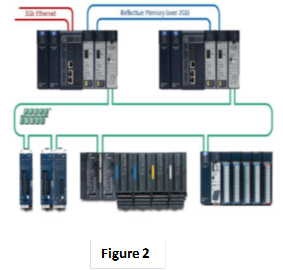Steve McQuaid explains how a redundant PLC configuration is the best way to optimally protect against issues arising from malfunctions
Programmable Controllers have been in use for more than 40 years, providing industrial control processing to manage electromechanical devices.
Programmable controllers were developed to replace old style relay based controls. These controllers provide much benefit over relay based control systems, requiring a lot less space to execute the same amount of control logic.
In addition these controllers are programmable devices that provide more flexibility than relay based systems and allow changes to be made without extensive re‐wiring required.
Over the years these controllers have provided numerous technologic advances and additional capabilities.
One key advance in technology has been the ability to apply two programmable controllers in a redundant configuration. Russelectric has been a leader in the industry incorporating back up redundancy into switchgear control solutions since early 1970s.
In the late 1980s Russelectric developed the software to utilize the GE Fanuc 90/30 PLCs in a redundant, ‘Hot‐Standby’” configuration.
Each PLC was configured in a rack with localised rack I/O. This design was improved with the use of distributed I/O which has worked quite well to provide redundant PLC operation utilising Genius bus communication protocol.

An example of this architecture is shown in Figure 1. GE no longer supports the Genius Communication and the 90/30 PLCs which have been discontinued and are obsolete. Replacement parts and support are becoming harder to find.
The 90/30 PLCs have been replaced with the newer RX3i PACs system controllers that utilize unique reflective memory technology. This allows these newer PLCs to be configured in a redundant synchronized configuration with bumpless switchover in the event of a failure or for maintenance and troubleshooting purposes. This reflective memory technology keeps the CPUs synchronised with simple configuration and minimal impact to application performance.

Figure 2 shows the arrangement with the reflective memory modules that provide dedicated, redundant, fibre communication links between the two PLC processors.
GE recommends that each PLC be equipped with two redundant RMX modules as shown. The communication to the I/O is done in a ring configuration utilising Profinet communication protocol.
Profinet provides real me control of the I/O with robust industrial Ethernet communication, using the MRP standard technology for Ethernet rings.
Ring redundancy minimises the likelihood and impact of network failures while allowing system updates and maintenance without stopping the process.
Communication is bi‐directional whereby a break in the ring will not affect the communication from the PLCs to the I/O providing a redundant communication path or what is known as a self‐healing ring.
The recommendation for true redundant PLC control is to have two redundant RMX modules in each PLC as key to providing this PLC redundancy, eliminating conflicts that can happen if only one RMX module is utilised by each PLC.
Steve McQuaid is Switchgear Product Line Manager, Russelectric, Inc.
 Engineer News Network The ultimate online news and information resource for today’s engineer
Engineer News Network The ultimate online news and information resource for today’s engineer





